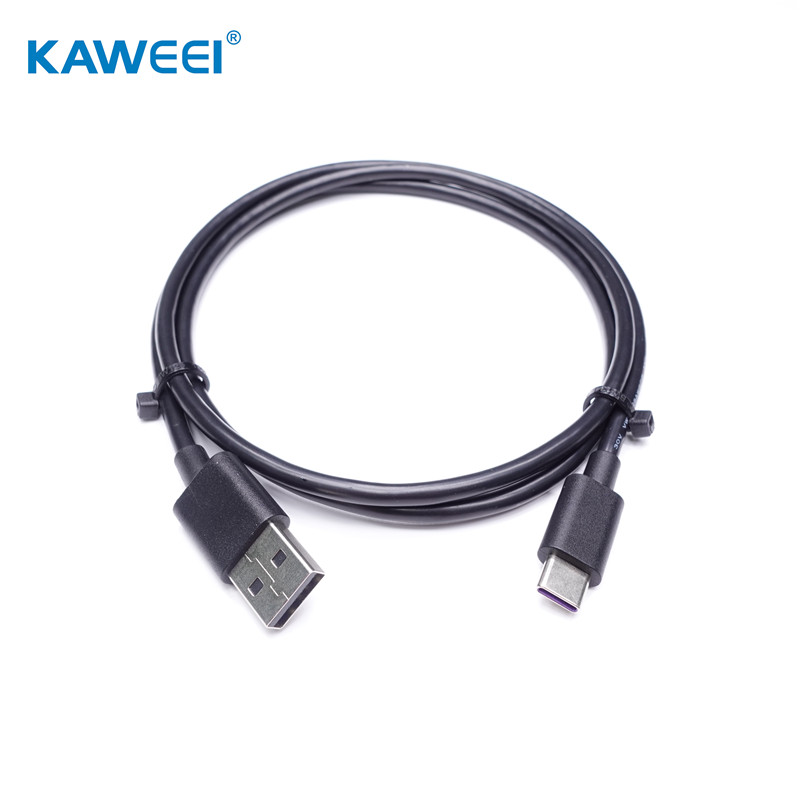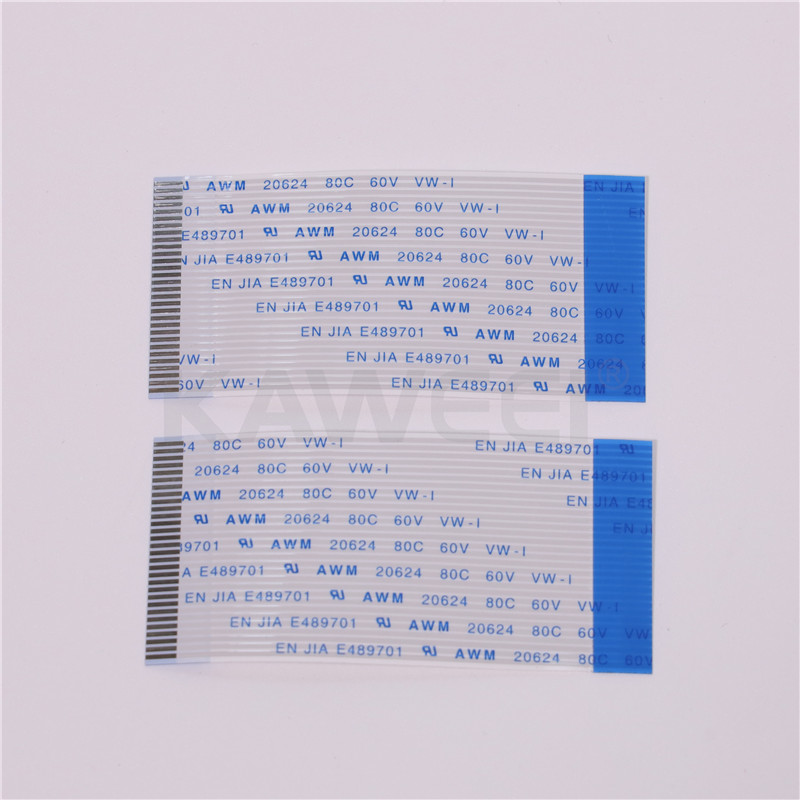Get local news delivered to your inbox!
CNN's Clare Duffy has the highlights from Apple's new iPhone lineup -- including a different charger. Network Cabling

LONDON — Bye, Lightning cable. Hello, USB-C.
Apple is ditching its in-house iPhone charging plug and falling in line with the rest of the tech industry by adopting a more widely used connection standard. A big part of the reason is a European Union common charging rule that's coming soon for the 27-nation bloc.
A USB-C cable is pictured in San Jose, Calif. Tuesday, March 10, 2015. Apple is ditching its in-house iPhone charging plug and falling in line with the rest of the tech industry by adopting USB-C, a more widely used connection standard.
Here's a look at the USB-C plug and what it means for consumers:
The first part of the acronym stands for Universal Serial Bus, and it replaces earlier versions of the USB cables used on everything from printers and hard drives to computer mice and Kindle readers.
The USB-C plug comes in a different shape than its predecessors — an elongated oval. It's also symmetrical and reversible, which eliminates one of the common gripes about previous versions like the rectangular USB-A connectors because there's no wrong way to plug it in.
USB-C cables can carry more power so laptops can be charged faster, and they enable faster data transfer speeds, allowing a big trove of files to be copied from a computer to an external hard drive. At the same time, they can pump out a video signal to a monitor and supply power to connected accessories.
The USB-C connector also is designed to be future-proof. Its shape won't change but newer versions — and the devices they connect to — will come with upgraded capabilities. That means users will have to beware because older devices might not be able to support the latest specs.
It's also slimmer than boxy USB-A plugs, making them a better fit for newer devices that keep getting smaller.
Apple has long championed its proprietary Lightning connector for iPhones even though pretty much no one else used it. It resisted the EU's common charging push, citing worries that it would limit innovation and end up hurting consumers.
A customer holds a Lightning to 3.5mm headphone jack adapter cable at the Apple Store on Michigan Avenue, Friday, Sept. 16, 2016, in Chicago.
Apple held out even as others started adding USB-C connectors into their devices. But after the EU proposal won a key approval last year, the U.S. tech giant gave in and didn't look back.
A company executive unveiling the latest iPhone on Tuesday didn't even mention the Lightning cable as she introduced its replacement.
"USB-C has become a universally accepted standard so we're bringing USB-C to iPhone 15," said Kaiann Drance, vice president of iPhone product marketing.
She said USB-C has "been built into Apple products for years" and can now be used on MacBooks, iPads, iPhones and AirPods.
Apple's shift is an example of how European Union regulations often end up rippling around the world — what's known as the "Brussels effect" — as companies decide it's easier to comply than make different products for different regions.
The EU spent more than a decade cajoling the tech industry into adopting a common charging standard. The push to impose rules for a uniform cable are part of the bloc's wider effort to make products sold in the EU more sustainable and cut down on electronic waste.
The EU's common charging rule won't actually take effect until fall 2024. It covers phones, tablets, e-readers, earbuds, digital cameras, headphones and headsets, handheld video game consoles, keyboards and mice, portable speakers and navigation devices.
It also standardizes fast-charging technology and gives consumers the right to choose whether to buy new devices with or without a charger.
Apple releases the original iPhone, a much-anticipated device that combines an iPod, phone and what then-company chairman Steve Jobs calls an “internet communicator.”
“This is a day I’ve been looking forward to for two-and-a-half years,” Jobs told the crowd when unveiling the new $399 product, a 16 GB phone with a relatively terrible 2.0 megapixel camera and relatively large 3.5” screen.
With the second version of the iPhone, Apple introduces the App Store and 3G connectivity. The new device, half the cost of the original iPhone, sold more than 3 million within a month, far outpacing its predecessor and expectations.
The 3GS introduces capabilities to record videos, as well as basic voice control (though Siri is still years away). The first “S” update to the iPhone also doubles the storage system, offering users an upgraded 32GB.
A completely redesigned device hits the shelves: thinner and sleeker with a better battery, camera and screen, the iPhone 4 starts to resemble the phone many of us use today. And with the addition of a front-facing camera, selfies and FaceTime calls enter into the chat.
“I grew up with the Jetsons dreaming about video phones,” said Jobs at the announcement. “It’s real now.”
Apple introduces the world to Siri, its now-iconic voice assistant, and the iMessage feature that allows iPhone users to message each other freely. Users are also given iCloud, making it possible to automatically sync all Apple devices.
With the iPhone 5 comes the Lightning cable, a shift away from the larger charging port used in Apple’s original iPhones and iPods. The 5 also gets a larger screen and LTE connectivity, making the phone much faster than its predecessors.
The 5S added the Touch ID feature, Apple’s first foray into biometric data usage as a replacement for passwords. Apple iPhone fans are also offered gold versions for the first time.
In a flash of colorful plastic glory, the iPhone 5C hits the markets as a low-cost alternative to the 5S. Available in green, blue, pink, yellow and white, the 5C is shortlived. Apple discontinues the product a couple of years later.
The first Plus option comes out, offering a much taller, thinner phone – but also one more prone to bending. Customers are quick to complain about bending iPhones after the 6/6Plus hit the market.
Apple releases the 6S and 6S Plus with a rose gold option, as well as adds new features like 3D touch and doubled memory capabilities. Plus, the bend problem is fixed.
Taking a step back, the iPhone SE is a cheaper, smaller device than the 6S, giving customers a chance to enjoy Apple’s phones at a much lower cost.
In traditional Apple fashion, the company does away with the traditional headphone jack, forcing customers to buy dongles that adapt older headsets or lightning-plug earbuds. The 7 is also the first water-resistant iPhone. It features a more static home button that cannot be pressed down, only touched, and the first dual camera lens with portrait mode.
Apple moves away from its tradition of releasing S versions on off years, instead leaping right to the 8 and 8Plus. This is the first iPhone to support wireless charging.
Goodbye home button, hello notched screen. The X revolutionizes the Apple product once again for its 10th anniversary, turning the iPhone into something that looks very similar to today’s versions. An extra lens also added portrait mode to the front facing camera, a fan favorite for iPhones to come.
After a massive physical overhaul with the X, Apple releases a largely unchanged Xs and XS Max other than an internal hardware update. Displays also became edge to edge, maximizing screen space.
Announced alongside the XS, the XR is smaller and cheaper, though still larger than the 8 Plus. And although it comes with only one back camera lens, the phone is available in six colors like blue, yellow and red.
The 11 also offers six colors to choose from, as well as better dual camera capabilities with ultra-wide len options. Starting at $699, it is one of Apple’s cheaper core line phones. Meanwhile, the 11 Pro and Pro Max boast a three-lens camera and Apple’s most advanced retina display to date.
In a throwback to its older devices, Apple shrinks down its phones to put out the SE second generation, complete with a now-retro home button. Even at a lower cost, the SE is tricked out with some of Apple’s flashiest features like an advanced camera and wireless charging.
The iPhone 12 mini is smaller than the usual iPhone but packs a powerful punch. With all of the features enjoyed by the iPhone 12 minus a little size and some battery life, the mini gives people everything they want while taking up less space in their pocket.
With the iPhone 12 series, Apple continued to upgrade its camera and display, plus introduce its proprietary MagSafe charging options. The 12 has two camera lenses while the Pro and Pro Max have three plus night mode and enhanced zoom range. The 12 and the 12 Pro are the same size, while the Pro Max is significantly larger. The 12 series also marks the end of Apple including an in-box charger with each iPhone purchase.
The iPhone 13 stays at the same price as the iPhone 12 with double the storage space, as well as featuring a much smaller top notch. Battery life and camera features are also majorly improved. The mini continues to be a powerful phone in a small package, and the Pro and Pro Max offer even better cameras.
The SE is back and better than ever, though still complete with a home button and Touch ID. It enjoys a lot of the same features seen in the higher-end iPhones: potrait mode, HD video, long battery life, et cetera.
Doing away with the iPhone Mini for the Pro, Apple brings back the larger Pro, as well as adds a slew of safety features like Emergency SOS via satellite. The Pro and Pro Max feature a “Dynamic Island” top notch that free floats from the top of the phone to better integrate into whatever is going on onscreen, as well as a better camera and display. A physical SIM card tray is also gone with the 14, pushing users towards eSIMs only.
Get local news delivered to your inbox!
CNN's Clare Duffy has the highlights from Apple's new iPhone lineup -- including a different charger.
A USB-C cable is pictured in San Jose, Calif. Tuesday, March 10, 2015. Apple is ditching its in-house iPhone charging plug and falling in line with the rest of the tech industry by adopting USB-C, a more widely used connection standard.
A customer holds a Lightning to 3.5mm headphone jack adapter cable at the Apple Store on Michigan Avenue, Friday, Sept. 16, 2016, in Chicago.

Engine Wiring Harness Replacement Get up-to-the-minute news sent straight to your device.